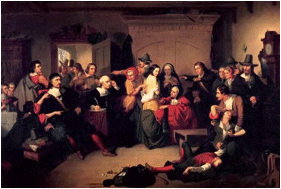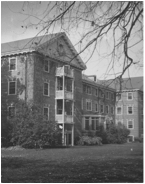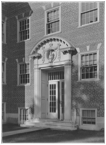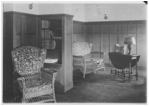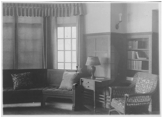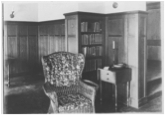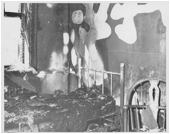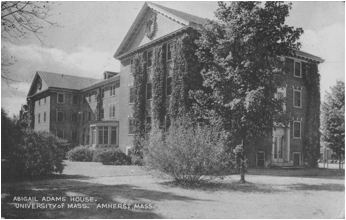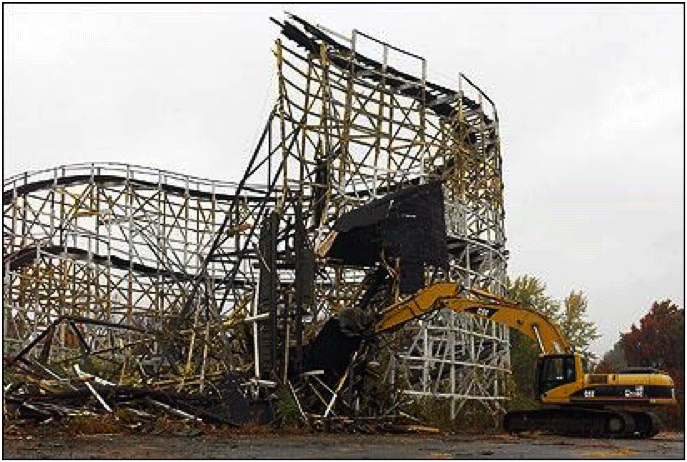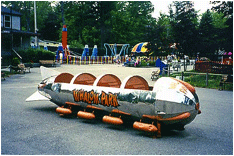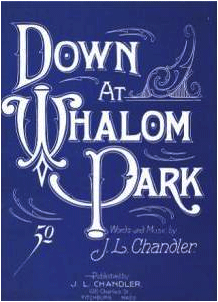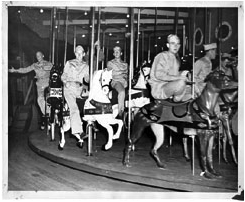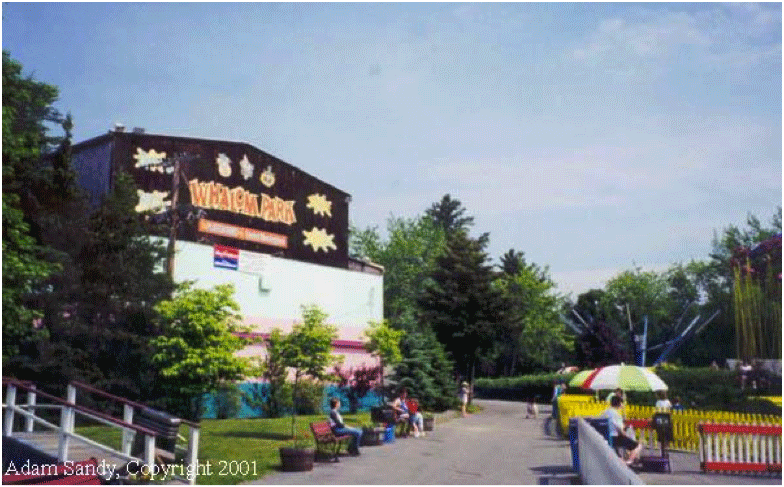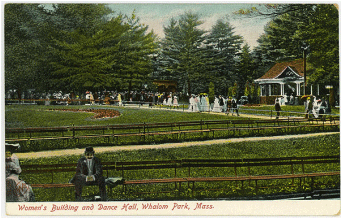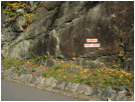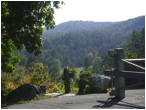By Shoki Yashiro.
 When I was about nine years old, my father had just moved back to Japan, and my mother began looking for ways to support our family. She worked odd jobs—sometimes as a secretary at a nutritional company called Ultimate Energy in Acton, Massachusetts, sometimes as an assistant manager at a Japanese bookstore in Cambridge, and every winter as a ski instructor at Nashoba Valley Ski Area. One day, however, she took a vacation, and fell in love.
When I was about nine years old, my father had just moved back to Japan, and my mother began looking for ways to support our family. She worked odd jobs—sometimes as a secretary at a nutritional company called Ultimate Energy in Acton, Massachusetts, sometimes as an assistant manager at a Japanese bookstore in Cambridge, and every winter as a ski instructor at Nashoba Valley Ski Area. One day, however, she took a vacation, and fell in love.
It was Nantucket Island—the small, whale-shaped piece of land thirty miles off the coast of Massachusetts. To her, it was a high-end paradise—something she could aspire to in America.
Nantucket is a beautiful, pristine coastal island—the beaches are flat, and extend onward into the horizon as the land curves out around the Atlantic, covered in muted shades of dune grass. The roads are quaint and narrow, winding around the densely populated town, occasionally falling into spots where the cobblestones from generations past still cover the ground. The people here are wealthy—Nantucket has the highest median property value of any Massachusetts town—the people who have houses here are either extremely wealthy, or have had the house in their family for generations. Even the people who do have houses here rarely live here—the population in Nantucket increases from 10,000 people in the offseason to 50,000 people during the summer months.
But it wasn’t the wealth, beauty and class of Nantucket that brought my mother back time and time again—it was the baskets. Nantucket baskets are a high-end woven basket, intricately crafted with Polynesian reed, cane, wood and ivory. The craft is fiercely guarded by the locals of the island, who were at first quite unwelcoming of this middle-aged Japanese woman, begging to be taken as an apprentice under one of the premier basket weavers. They were afraid she would bring the craft outside of the island, and expose this hidden art form to the general public—to be fair, this is exactly what she did. In any case, after a few years of nagging, a very respected and accomplished basket maker named Alan Reed (no pun intended) agreed to teach her.

The Nantucket basket has a long history, deeply rooted in the culture of the island. Its first influences lie in the “some 3000 natives of the Wampanoag tribe” that inhabited the island, known in their tongue as “faraway land” (Oldham). The natives wove utilitarian baskets out of ash splints and weavers with a square woven bottom for use in and around the home. In 1659, the island was purchased to be settled as and English colony by a few names you will see all over this island, even today—names like Coffin, and Macy, Swain, and Pike. The purchase document, preserved in the collection of the Nantucket Historical Association, reads: “all right and interest that I have in the Island of Nantucket… for and in consideration of the sum of Thirty pounds … and also two bever hats one for myself and one for my wife” (Oldham).
Eventually, the Nantucketers discovered whaling—inspired by the natives, who rode out in canoes to kill small whales offshore, the predominantly Quaker settlers began to hunt “right” whales off the coasts—so called for the ease with which they were hunted, and the large amounts of fuel oil their blubber yielded. However, in 1715 a sperm whale was taken by a Nantucket sloop blown out in a gale, and a new era began. The sperm whale’s gigantic skull is filled with a goopy, sperm-like oil that burned in a clean, smokeless fire and with efficiency which was unheard of then. Nantucket became the premier whaling port of the world, along with New Bedford just down the coast, as they began sending large whaleships around the world, voyages lasting typically two to five years. Each whaleship was outfitted with everything it needed to hunt the enigmatic creature, as well as to “try out” the blubber, boiling it into a burnable fuel. In order to store the oil, each ship had to have a cooper—a barrel-maker.

The whaling coopers, whose only task was to repair and make barrels onboard a four-year journey, were the first to make what is now called a Nantucket basket. With all the tools to craft wood, the coopers began to weave hybrid baskets incorporating elements of the Wampanoag baskets with a wood base from New Hampshire work baskets. As the whalers traveled across the world, they came upon a strong, beautiful cane reed in the South East, and particularly in the Phillipines. Using this cane as weavers, the Nantucket basket slowly emerged.
As the discovery of petroleum emerged in the late 19th Century, the whaling era of Nantucket ended, and the island settled down. However, in 1856, the Commonwealth of Massachusetts commissioned “lightships”—large, floating lighthouses to help guide ships through the dangerous South Shoals, and Davis’ Shoal. These approximately 10-man crews, like the whaling coopers, found themselves with plenty of time to kill. They began weaving “Nantucket lightship baskets”—refined versions of the baskets woven on the whalers. These baskets were widely used around the island, and became popular with visitors. The craft of basket-making became a cultural symbol of the island, and “was passed on from one man to another along with molds, tools and trade secrets” (“Nantucket Lightship”). Even as the lightships were decommissioned, the craft continued on the island.

However, everything changed with the arrival of Jose Formoso Reyes, a Filipino man who came to Nantucket to settle after graduating Harvard and later fleeing the Philippines during World War II. Intrigued by the baskets all around him, Reyes quickly mastered the craft and modified it to his own taste. From the Nantucket Rafael Osona Auction House:
By 1948, [Reyes had] invented lids fashioned in the same manner as the baskets themselves: cane weavers fixed into a grooved wooden plate that had been bolted to a mold, with staves – or ribs – splayed out around it, as a framework for the weavers. A hardwood rim mirrored the rim on the basket; the lid affixed with cane-wrapped leather loops. […] Eventually, the addition of ivory whales, shells or gulls carved in relief and centered on the plate added interest – and status – to the various baskets. Quite suddenly, Reyes’ uniquely stylish Friendship Baskets were attracting the attention of Nantucket’s ladies and visitors alike. Wait lists for a José Reyes Friendship basket grew from months to years, as his practical invention evolved from becoming locally fashionable to a bona fide cottage industry. (Walsh)
The Nantucket Friendship Baskets became a symbol of status and elegance, and were used as everyday purses and handbags.

Now, the Nantucket basket is a rare and valuable piece of history—it is perpetuated on the island by well-known basket-makers such as Nap Plank, Michael Kane, Judy Sayle, and Alan Reed—all names you will find on the website of the Nantucket Lightship Basket Museum.
When Alan Reed, a “grumpy and sour old man”, as described by my mother, finally agreed to teach her, she was ecstatic. She began making multiple trips to the island from our home in Arlington, often for single days at a time, until Alan started letting her stay at his home. Even the other local shopkeepers and basket makers on the island began to warm up to her, welcoming her as a familiar face. Eventually, Etsuko became one of Alan’s best students, learning how to soak and soften the wood staves and rim pieces, how to tight-weave the reed and carve latch-pieces and hinges out of wood, and eventually ivory. Now, Etsuko Yashiro’s Nantucket baskets sit in the displays at the Nantucket Lightship Basket Museum, and she is one of the better weavers in the world. By her own account, “there are a few that are still better than me. Alan, definitely. And Michael Kane, and Judy [Sayle].”
Meanwhile, as her other jobs began to fall apart (Ultimate Energy went bankrupt in the late 90s, and Sakura, the Japanese bookstore in the early 2000s), she began teaching basket-weaving in our basement to bored Japanese housewives in America. She did this steadily from 1996 to about 2002, when some disgruntled neighbors complained to the town about the number of cars that were parking near our house. Prohibited from running a business out of her home, Etsuko decided to take out a loan and open a studio. “I started GrayMist Nantucket Basket Studio in 2002, and we decided to open a gift store as well, to cover the rent. It’s in Cambridge, so the rent is very high,” she says, partly in English, though turning steadily into Japanese. The store is located in Huron Village, and focuses on selling Nantucket and New England gifts, as well as every material and supply needed to craft Nantucket baskets: tools, reed, cane, molds, bases, rims, lids, handles, knobs, wooden washers, straps, hardware—even ivory carvings, though, as Etsuko says, “we only buy and sell fossilized mammoth ivory and recycled antique ivory”.
However, GrayMist is only a fraction of the New England Nantucket Basket Association (NENBA), founded by Etsuko Yashiro after the studio opened. Many of the people who learned to make baskets from my mother in turn wanted to teach Nantucket basket-making. These people, almost exclusively Japanese housewives with plenty of free time, eventually spread out across America and Japan, teaching the guarded Nantucket craft under my mother’s contract. Now, there are more than two hundred people teaching under her, from as diverse locations as Washington State, to Okinawa, Japan, and even out to Lanciano, Italy.


Two years ago, one of her students sent her a plastic toy Nantucket basket, made by Disney and sold packed with candy at the “Cape Cod” area of Disney Sea Japan—which would have seemed like a coincidence, if Disney had not used a distinctive double-handled basket style that my mother had invented years earlier.
And so, the craft of the Nantucket basket is not so well-guarded anymore—my mother saw to that. But still, there are some things that even Etsuko will never reveal. Alan Reed, a master in every facet now of his craft, has taught her things that no student will ever pry from her—how to carve an ivory latch, how to hide nails in the rim of the basket, et cetera. And perhaps that’s why the Nantucketers no longer cast conspiring glares at my mother, why they instead welcome her as one of their own—there’s an unspoken contract there. They allow her to learn, and to teach the craft, as long as she continues to guard the most important secrets of her trade, a trade deeply rooted in Nantucket’s culture.
Works Cited
“Nantucket Lightship Baskets; A Historic Perspective.”Nantucket Lightship Basket Museum. Nantucket Lightship Basket Museum, n.d. Web. 31 Oct 2012. <http://www.nantucketlightshipbasketmuseum.org/LightshipBaskets.html>.
Oldham, Elizabeth. “A Brief History of Nantucket.”Nantucket Historical Association. Nantucket Historical Association. Web. 1 Nov 2012. <http://www.nha.org/library/faq/briefhistory.html>.
Walsh, Carolyn. “Jose Formose Reyes (1902-1980).”Rafael Osona Auctions. Rafael Osona Auctions. Web. 4 Nov 2012.
Yashiro, Etsuko. Telephone Interview. 2 Nov 2012.




